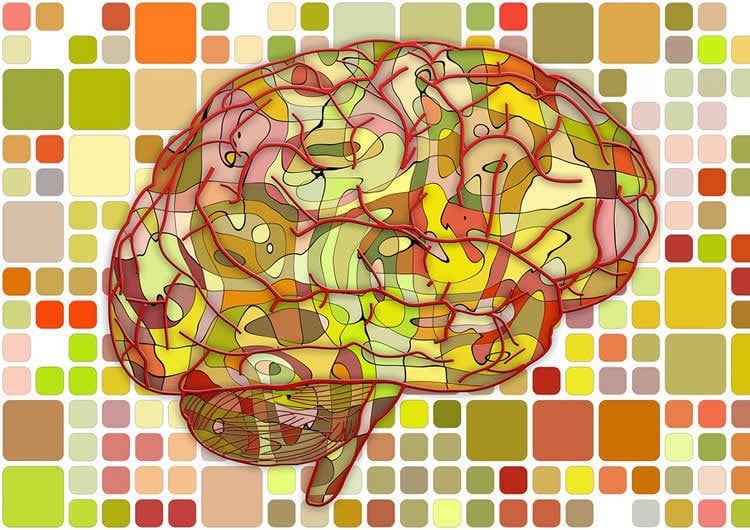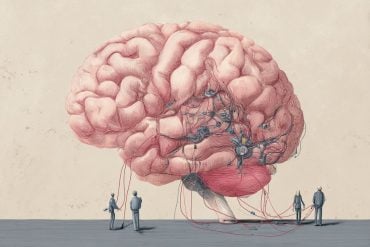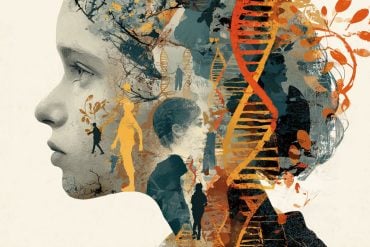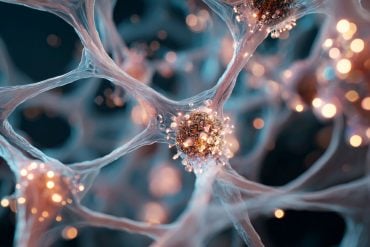Summary: A new study reveals how male sex steroids impact brain development. The findings could help shed light on behavioral developmental differences between males and females.
Source: University of Maryland.
Researchers at the University of Maryland School of Medicine have discovered a mechanism for how androgens — male sex steroids — sculpt brain development. The research, conducted by Margaret M. McCarthy, Ph.D., who Chairs the Department of Pharmacology, could ultimately help researchers understand behavioral development differences between males and females.
The research, published in Neuron, discovered a mechanism for how androgens, male sex steroids, sculpt the brains of male rats to produce behavioral differences, such as more aggression and rougher play behavior. “We already knew that the brains of males and females are different and that testosterone produced during the second trimester in humans and late gestation in rodents contributes to the differences but we did not know how testosterone has these effects” said Dr. McCarthy.
Jonathan Van Ryzin, PhD, a Postdoctoral Fellow, was lead author on this research conducted in Dr. McCarthy’s lab.
A key contributor to the differences in play behavior between males and females is a sex-based difference in the number of newborn cells in the part of the brain called the amygdala, which controls emotions and social behaviors. The research showed that males have fewer of these newborn cells, because they are actively eliminated by immune cells.
In females, the newborn cells differentiated into a type of glial cell, the most abundant type of cell in the central nervous system. In males however, testosterone increased signaling at receptors in the brain which bind endocannabinoids, causing immune cells to be activated. The endocannabinoids prompted the immune cells to effectively eliminate the newborn cells in males. Females rats in the study were unaffected, suggesting that the activation of the immune cells by the increased endocannabinoids in males was necessary for cell elimination. In this respect, this research shows that cannabis use, which stimulates endocannabinoids in the brain and nervous system, could impact brain development of the fetus and this impact could differ between male and female fetuses.

This study provides a mechanism for sex-based differences in social behaviors and suggests that differences in androgen and endocannabinoid signaling may contribute to individual differences in brain development and thus behavioral differences among people.
“These discoveries into brain development are critical as we work to tackle brain disorders as early in life as possible, even in pregnancy,” said UMSOM Dean E. Albert Reece, MD, PhD, MBA, who is also the Executive Vice President for Medical Affairs, University of Maryland, and the John Z. and Akiko K. Bowers Distinguished Professor.
Source: University of Maryland
Publisher: Organized by NeuroscienceNews.com.
Image Source: NeuroscienceNews.com image is in the public domain.
Original Research: Abstract for “Microglial Phagocytosis of Newborn Cells Is Induced by Endocannabinoids and Sculpts Sex Differences in Juvenile Rat Social Play” by Jonathan W. VanRyzin, Ashley E. Marquardt, Kathryn J. Argue, Haley A. Vecchiarelli, Sydney E. Ashton, Sheryl E. Arambula, Matthew N. Hill, and Margaret M. McCarthy in Neuron. Published February 28 2019.
doi:10.1016/j.neuron.2019.02.006
[cbtabs][cbtab title=”MLA”]University of Maryland “Clues to Brain Differences Between Males and Females.” NeuroscienceNews. NeuroscienceNews, 2 March 2019.
<https://neurosciencenews.com/brain-sex-differences-10846/>.[/cbtab][cbtab title=”APA”]University of Maryland (2019, March 2). Clues to Brain Differences Between Males and Females. NeuroscienceNews. Retrieved March 2, 2019 from https://neurosciencenews.com/brain-sex-differences-10846/[/cbtab][cbtab title=”Chicago”]University of Maryland “Clues to Brain Differences Between Males and Females.” https://neurosciencenews.com/brain-sex-differences-10846/ (accessed March 2, 2019).[/cbtab][/cbtabs]
Abstract
Microglial Phagocytosis of Newborn Cells Is Induced by Endocannabinoids and Sculpts Sex Differences in Juvenile Rat Social Play
Brain sex differences are established developmentally and generate enduring changes in circuitry and behavior. Steroid-mediated masculinization of the rat amygdala during perinatal development produces higher levels of juvenile rough-and-tumble play by males. This sex difference in social play is highly conserved across mammals, yet the mechanisms by which it is established are unknown. Here, we report that androgen-induced increases in endocannabinoid tone promote microglia phagocytosis during a critical period of amygdala development. Phagocytic microglia engulf more viable newborn cells in males; in females, less phagocytosis allows more astrocytes to survive to the juvenile age. Blocking complement-dependent phagocytosis in males increases astrocyte survival and prevents masculinization of play. Moreover, increased astrocyte density in the juvenile amygdala reduces neuronal excitation during play. These findings highlight novel mechanisms of brain development whereby endocannabinoids induce microglia phagocytosis to regulate newborn astrocyte number and shape the sexual differentiation of social circuitry and behavior.






